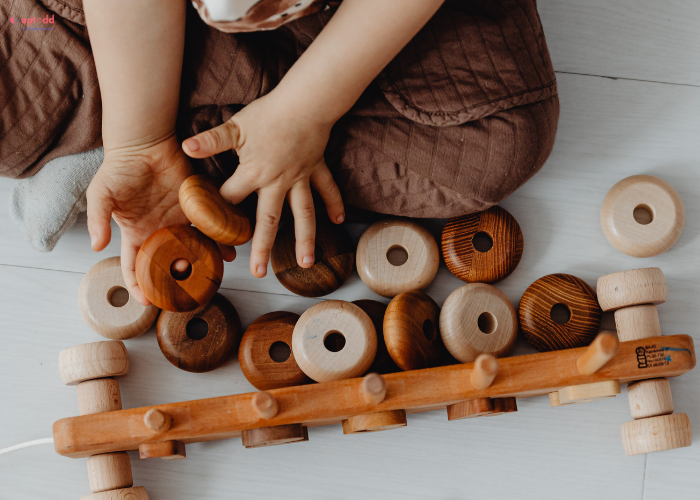
Motor Skills
RandomPost
Topic
RandomPost
May start as early as
<enter months here>
─────────
Skills that comes first
<enter few skills manually>
Related Skills
In this Article:
Walking means big changes for your baby and for you. For your baby, learning how to shift their weight onto one leg to take a step forward with the other means more mobility, independence, and a fresh view. For you, it means keeping up with an active little person who is now officially… a toddler ❤️
When do babies start walking?
Your baby’s first steps may happen anywhere from 9 to 18 months of age, a wide range that represents the uniqueness of each child’s development. On average, babies tend to start walking independently between 12 and 15 months. Before that, your baby may walk with support from furniture or the wall—also known as cruising—around 9 to 13 months.
What are the signs my baby will walk soon?
You’ll know your baby is getting ready to take their first steps when you see them testing out pre-walking skills like pulling up to stand, cruising, squatting with support, and standing unassisted. These movements help your baby gain strength and experiment with balance and movement.
Here’s a little more about each stage in the walking progression:
Pulling up to stand (7 to 10 months)
Pulling up to stand is one of the first steps in learning to walk. Babies do this around 7 to 10 months of age, relying on furniture or a caregiver’s hands or legs. Pulling up to stand typically happens after they learn to sit unsupported or crawl. Babies often figure out how to grab a crib rail or other furniture and use their arms to support their body weight.
Cruising (9 to 13 months)
When your baby is comfortable with pulling up, and has learned a bit about balancing on their feet, they’ll begin to step sideways while holding onto furniture. Known as “cruising,” this usually happens around 9 to 13 months of age. You can see how this action helps prepare your baby for walking: Furniture helps them balance as they use their legs to take some wobbly steps.
To encourage your new cruiser, some furniture rearranging might be in order. To help your baby safely practice, move a sofa, coffee table, ottoman, or some sturdy chairs closer together. Pad sharp corners and be mindful of places your baby can fall.
Once your baby starts cruising along furniture, you may also see them start to cruise along vertical surfaces, like the wall or the back of the couch. This raises the difficulty level, because they have less support for cruising and are challenged to maintain their balance.
Standing unassisted (10 to 16 months)
As your baby gets more experienced with cruising, they will eventually try to step away from whatever they’re holding onto for support. Their first few moments of unassisted standing may happen unintentionally, perhaps while transferring an object from hand to hand.
Babies typically learn how to stand without support—at least for a moment—between 10 to 16 months of age. You’ll know those first steps are coming soon when your baby stands unassisted for longer and longer stretches. Generally, toddlers begin walking about 2 to 2.5 months after learning to stand.
How can I encourage my baby to walk?
The best thing you can do to help your baby learn to walk is to encourage them to experiment with different types of movement. Try these OT- and PT-approved tips:
Go barefoot: Have your baby play barefoot on the floor. This gives them full sensory feedback through their feet and supports healthy foot development.
Rearrange furniture: Set up two pieces of furniture—like a couch and a low table—parallel to each other and with enough space in between for your baby to cruise while holding onto both. Sit or kneel at the opposite end of this aisle from your baby and invite them to come get an interesting plaything or object. Slowly increase the distance between the furniture, so that your baby may need to let go of one support surface to reach the other. Guard them or help them as needed by holding on to their trunk.
Motivate with toys: If your baby can stand unsupported, offer them a toy within their reach, such as the Stainless Steel Jingle Keys. Hold onto the toy as they grasp it, then move it a small distance to see if your baby will step toward it. Try again from a little farther away to see if they’ll take an independent step.





